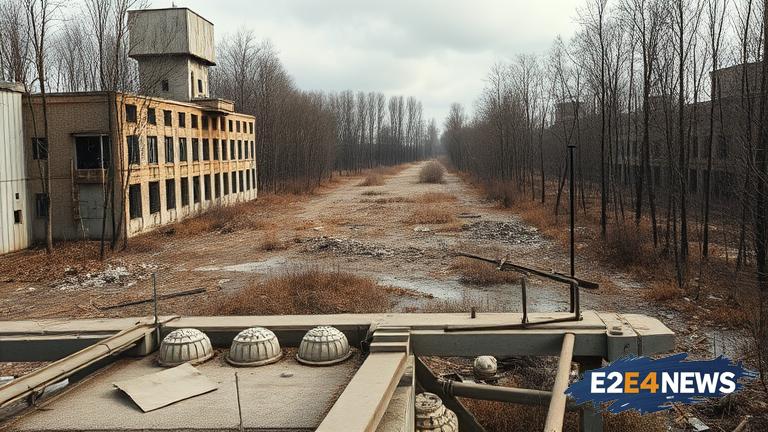The Chernobyl disaster, which occurred on April 26, 1986, is widely regarded as the worst man-made disaster in history. A virtual tour of the affected area provides a haunting glimpse into the devastating consequences of the catastrophic event. The disaster began with a safety test on one of the reactors at the Chernobyl Nuclear Power Plant, located in Ukraine. The test aimed to determine how long the turbines would keep spinning and generating electricity in the event of a loss of power to the main cooling pumps. However, the test went catastrophically wrong, resulting in a power surge that led to a steam explosion, which in turn caused a massive fire that released radioactive materials into the environment. The explosion and subsequent fire released large quantities of radioactive iodine and cesium into the air, contaminating a vast area around the plant. The nearby city of Pripyat was evacuated, and it remains abandoned to this day. The virtual tour takes visitors through the abandoned city, showcasing the remnants of a once-thriving community. The tour also explores the Chernobyl Nuclear Power Plant itself, where visitors can see the damaged reactor and learn about the events leading up to the disaster. The disaster had a profound impact on the environment, with radioactive materials contaminating large areas of land and water. The nearby forests and fields were particularly affected, with many trees and plants dying off due to radiation poisoning. The disaster also had a significant impact on human health, with many people exposed to radioactive materials suffering from radiation sickness and other health problems. The virtual tour provides a poignant reminder of the importance of nuclear safety and the need for careful planning and execution of safety tests. It also highlights the devastating consequences of human error and the importance of learning from past mistakes. The Chernobyl disaster was a wake-up call for the nuclear industry, leading to significant improvements in safety procedures and regulations. Despite these improvements, the legacy of Chernobyl continues to be felt, with many areas still contaminated and many people still suffering from the effects of radiation exposure. The virtual tour of Chernobyl serves as a reminder of the importance of responsible and safe management of nuclear power. It also provides a unique opportunity for visitors to learn about this pivotal event in history and to pay their respects to those who were affected by the disaster. The tour is a must-visit for anyone interested in history, science, and the environment. It provides a fascinating glimpse into the science behind nuclear power and the importance of safety protocols. The virtual tour is also a tribute to the brave men and women who worked to contain the disaster and prevent further damage. Their selfless efforts saved countless lives and prevented a much larger disaster. The Chernobyl disaster was a tragic event that had far-reaching consequences, but it also served as a catalyst for change, leading to significant improvements in nuclear safety and a greater awareness of the importance of responsible management of nuclear power. The virtual tour of Chernobyl is a powerful reminder of the importance of learning from the past and working towards a safer and more sustainable future. In conclusion, the virtual tour of Chernobyl is a unique and thought-provoking experience that provides a fascinating glimpse into one of the most significant events in history. It is a must-visit for anyone interested in science, history, and the environment, and serves as a poignant reminder of the importance of responsible and safe management of nuclear power.
